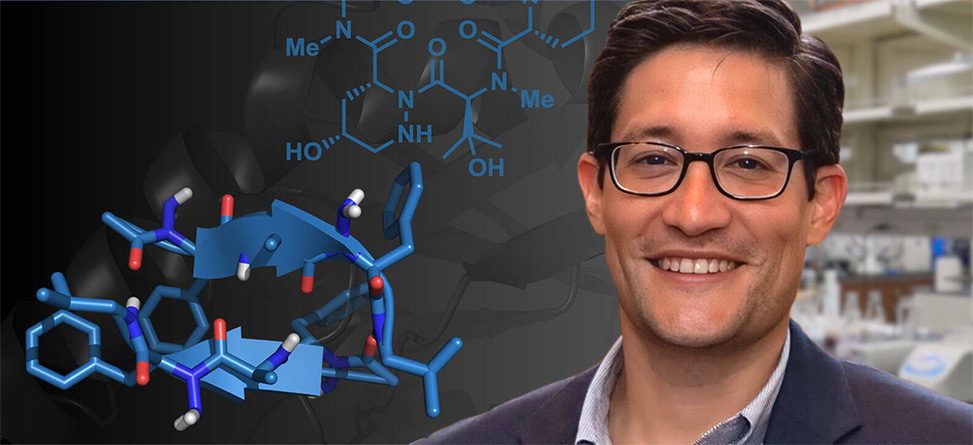Lab of the Month – The Del Valle Group
The Lab
“What I cannot create I do not understand” – Richard Feynman
The Del Valle lab, located at the University of Notre Dame, develops synthetic approaches toward peptide natural products and novel proteomimetics. Our goals are to elucidate peptide and protein structure-function relationships through peptidomimetic design. The lab started at New Mexico State University, then moved to the Moffitt Cancer Center at the University of South Florida in 2009. In 2019, Dr. Del Valle accepted a position at the University of Notre Dame, where he is the Warren Family Professor of Chemistry & Biochemistry.

Creativity, honesty, and open communication are at the core of our lab philosophy. This creates a unified atmosphere where problem-solving and collaboration are emphasized. Mentoring of new lab members by the whole group is not only encouraged but promotes a safe, inclusive, supportive environment. The diversity of our research team brings in fresh scientific perspectives and helps to spur innovative ideas into action. The lab is composed of postdocs, graduate students, and undergraduate students from all over the country and the world!
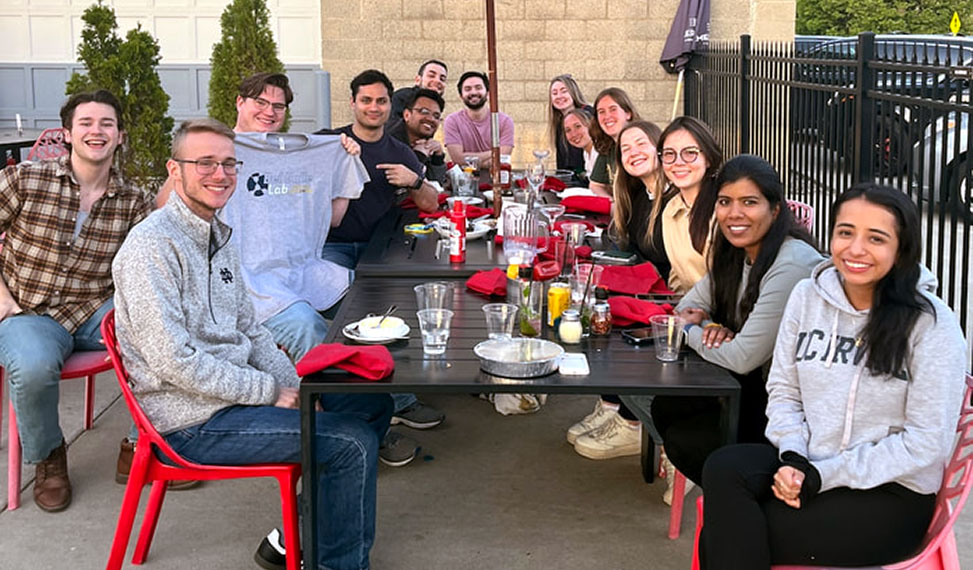
We work on various projects ranging from synthesizing and optimizing natural products to modifying canonical peptides and proteins to study their conformational and physicochemical properties. We are also interested in modeling and targeting tau misfolding and propagation, which are central to several neurodegenerative diseases. Many of these projects involve backbone N-heteroatom substituted peptides as the key player. N-heteroatom substituted peptides have unique effects on the conformation and stability of host sequences.
Away from the fume hoods, the lab enjoys tailgating, football games, Go Irish, and karaoke singing! We celebrate each other’s accomplishments with cake and champagne, and wind down at our yearly Christmas party and summer barbeque. We look to one another for mentorship and friendship, all centered on our love and curiosity for peptide science.
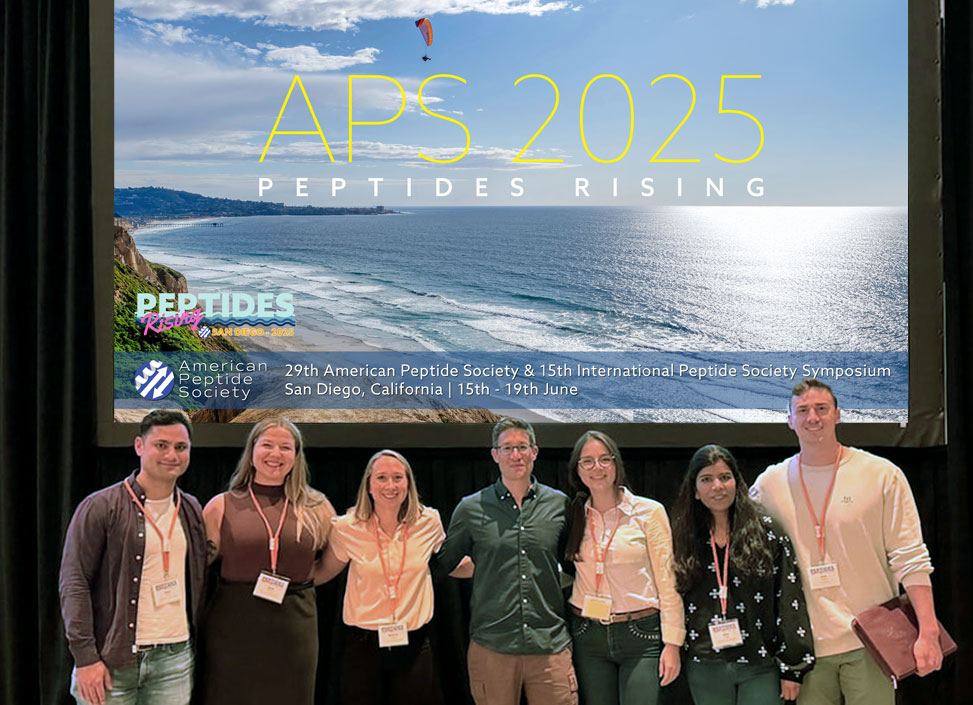
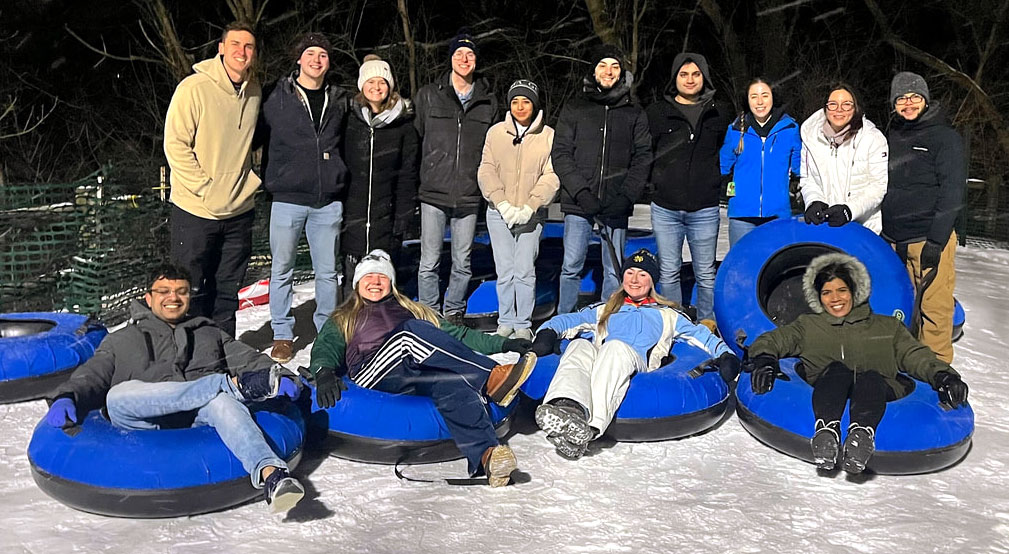
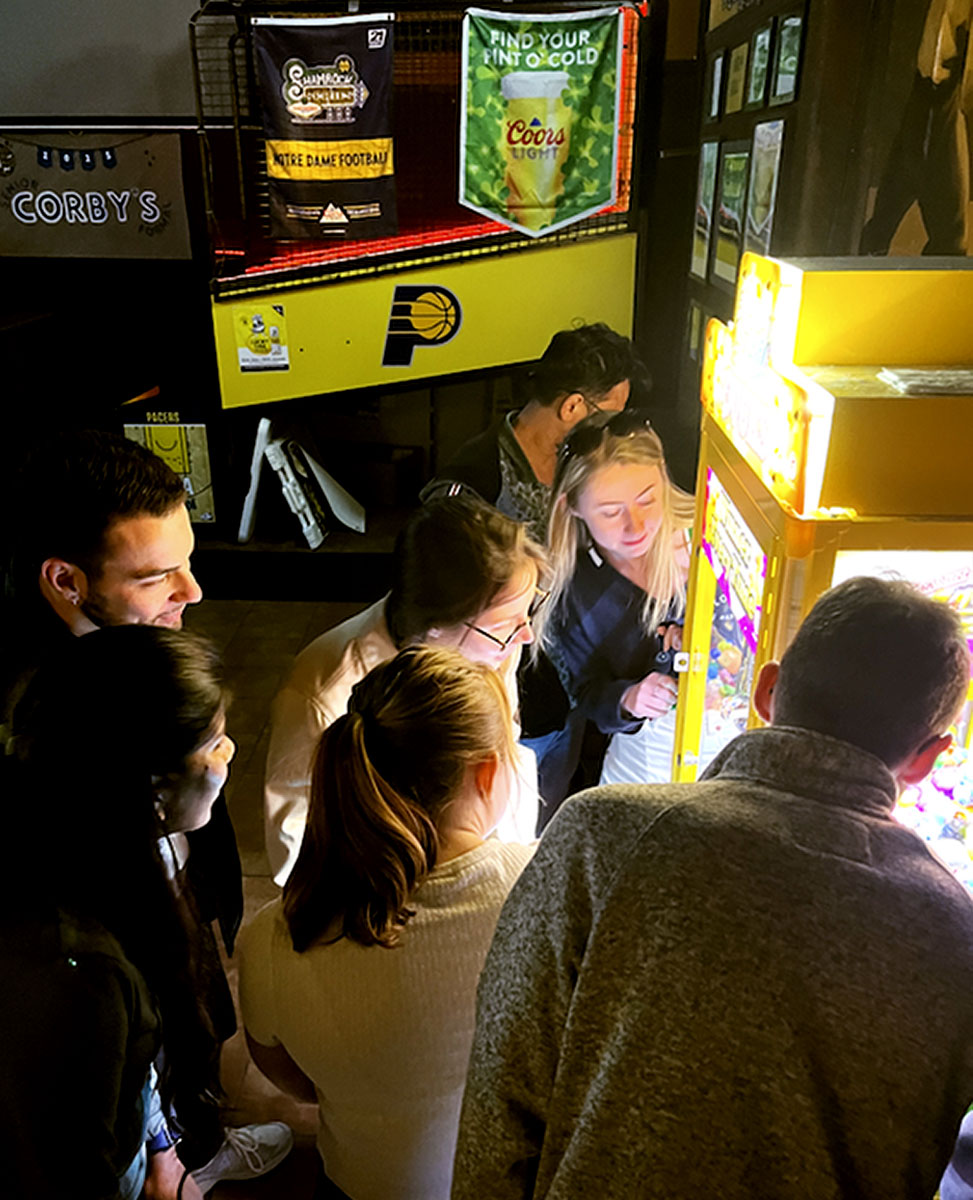
The Del Valle lab is broadly interested in bringing the power of organic chemistry to bear on current challenges in drug discovery and biomolecular recognition. Our research program lies at the interface of organic synthesis and chemical biology, with an emphasis on the structure-based design of biologically active peptidomimetics and small molecules. We view non-canonical peptides and stabilized protein folds as the “next wave” in drug discovery, and we are working to realize their promise as potential therapeutics.
Modulators of Neurodegenerative Tau Propagation
Several neurodegenerative diseases are characterized by misfolding and assembly of the tau protein into conformationally diverse fibrils. These fibrils can, in turn, spread from cell-to-cell leading to disease progression. We are pursuing the structure-based design and synthesis of tau mimics that can 1| nucleate elusive pathological folds, or 2| potently inhibit tau propagation across cells.
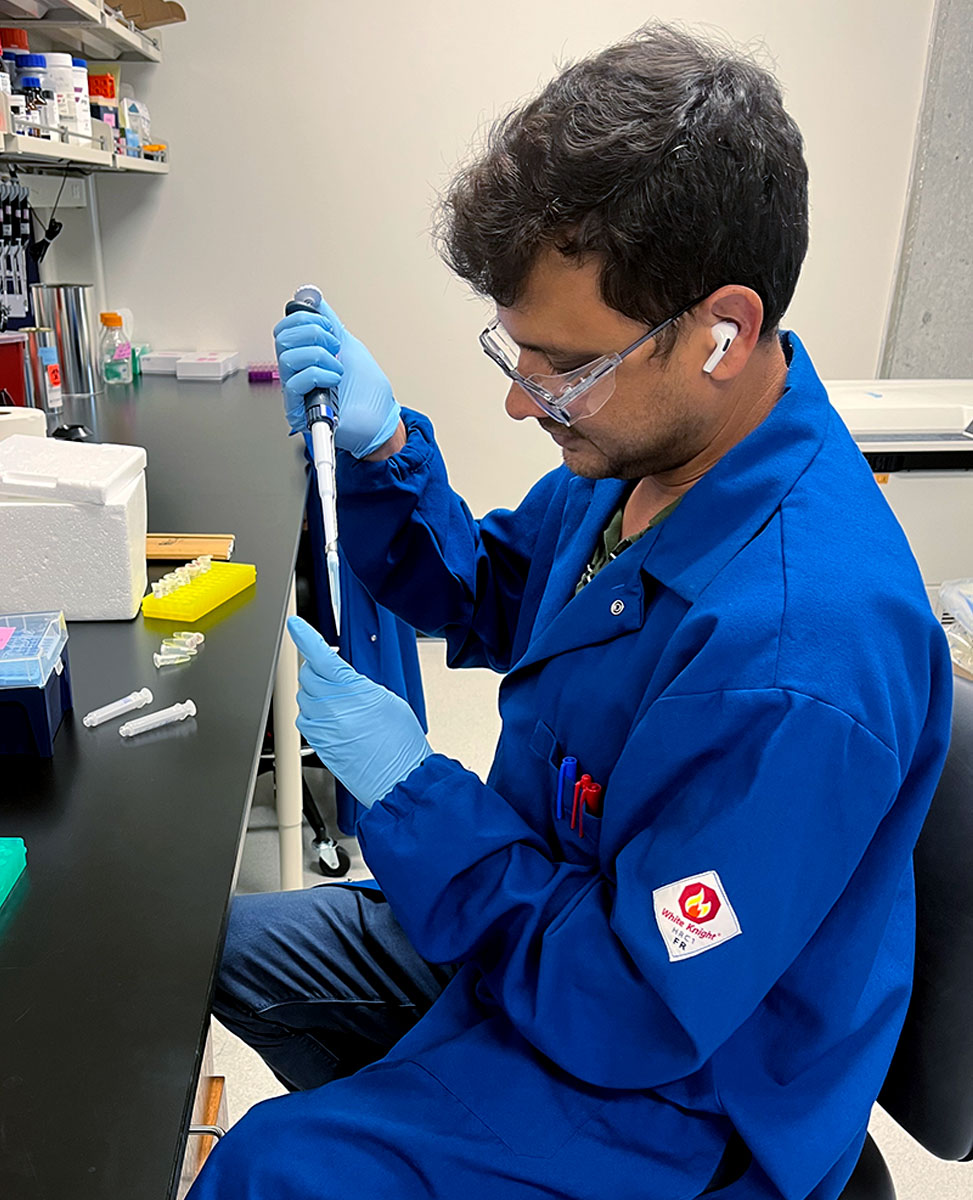
Synthesis and Optimization of Peptide Natural Products
Non-ribosomal peptides, NRPs, and ribosomally-synthesized post-translationally modified peptides, RiPPs, are promising classes of natural products with diverse biological activities. We are targeting the synthesis of several NRPs and RiPPs that harbor complex backbone modifications important for biological activity. Total synthesis provides a platform for the development of new methods and tactics, as well a launching point for conformation-activity relationship studies.
Peptide and Protein Mimics Targeting PPIs
The development of molecules capable of disrupting protein-protein interactions, PPIs, remains a significant challenge. We are engaged in the design and synthesis of β-sheet mimics, stabilized polyproline II helices, and macrocyclic peptides, and in parsing the impact of chemical modifications on protein folding and stability. Our compounds are then employed to target PPIs that drive cancer, neurodegeneration, and infectious disease.
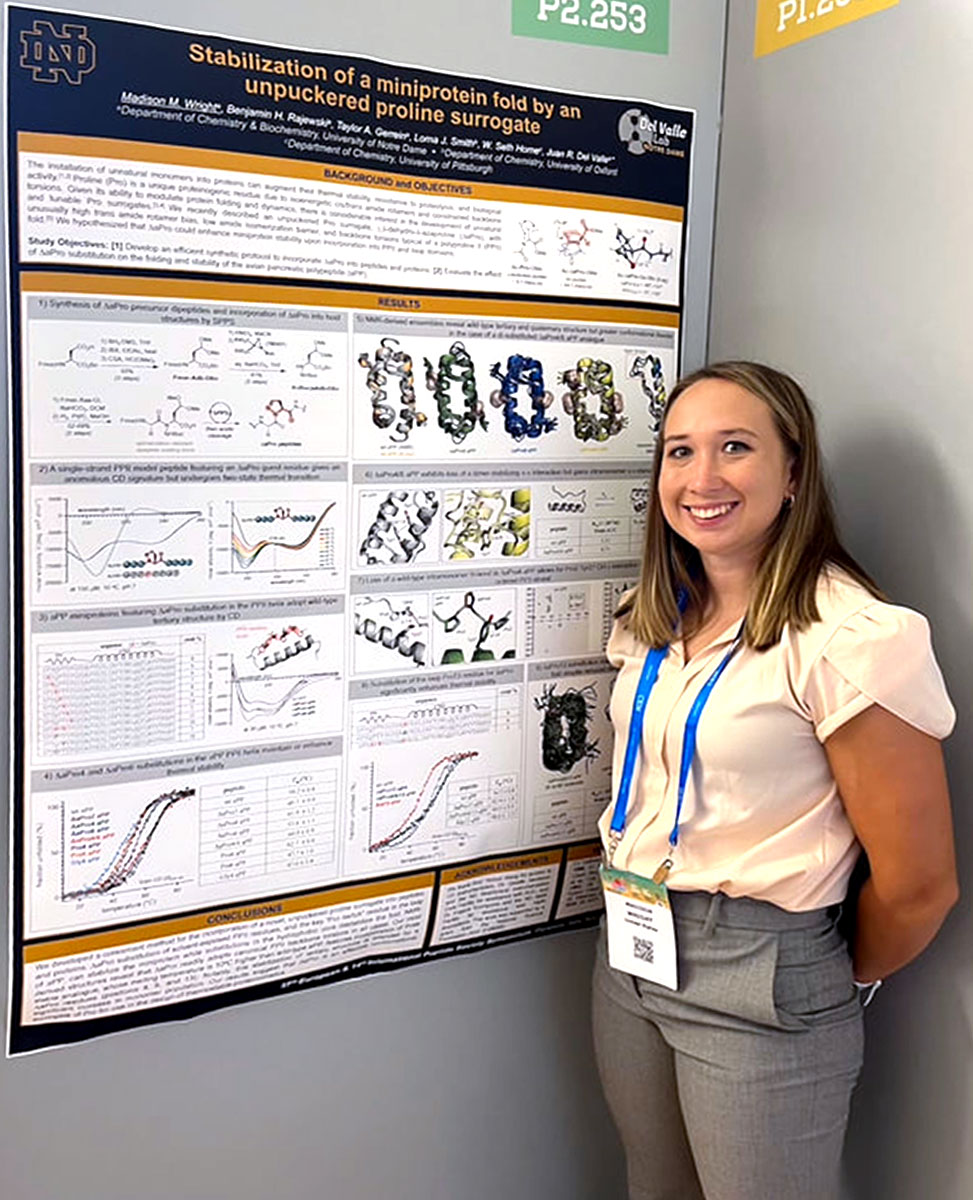
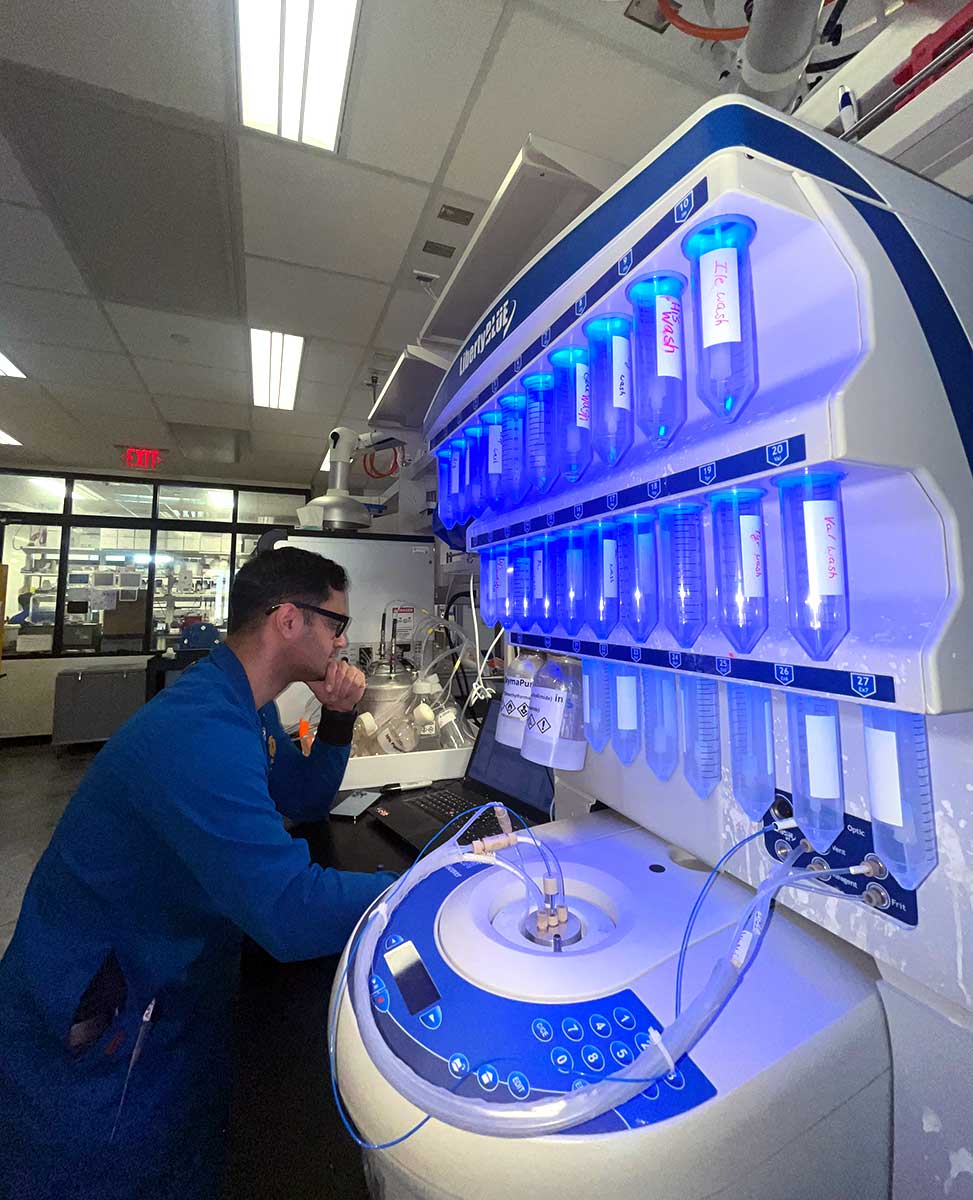
An Interview with Professor Del Valle
The American Peptide Society is pleased to highlight Professor Juan R. Del Valle, whose group at the University of Notre Dame is advancing the frontiers of peptide chemistry through innovative backbone modifications and foldamer design. In this conversation, we discuss his scientific journey, recent publications, and vision for the field.
Q: Could you tell us a little about your path into peptide science?
A: My background is in organic synthesis, and I was drawn early on to the idea that peptides could be both a rich target and a versatile tool. During my graduate and postdoctoral training, I became fascinated by how much information is encoded in the peptide backbone, and how subtle modifications could unlock new folding patterns. That blend of synthetic challenge and biological relevance is what brought me fully into the peptide world.
Q: Your group has been exploring backbone-modified systems, including azapeptoids in collagen mimetics. What motivated this direction?
A: Collagen’s triple helix is one of nature’s most iconic architectures, but it also poses puzzles. Proline and hydroxyproline occupy privileged positions, yet they come with cis–trans challenges. We wanted to see how alternative backbones, such as azapeptoids, might substitute into the Xaa/Yaa positions. It’s a way of testing the flexibility of the code itself—how much room there is to redesign the building blocks without unraveling the fold.
Q: Another of your recent papers focused on β-sheet mimics. How do you see these projects fitting together?
A: Both are about probing the limits of peptide design. In the β-sheet work, we looked at whether noncanonical backbones can maintain hydrogen-bonding edges and still present functional side chains. These efforts are complementary: collagen mimics test our ability to stabilize known folds, while β-strand mimics test whether we can create foldamers that engage protein partners in new ways.
Q: What are the larger goals of this line of research?
A: Ultimately, we hope to provide tools for modulating protein–protein interactions that have traditionally been considered “undruggable.” By learning where the backbone can be altered while still preserving folding information, we can design molecules that are stable, selective, and biologically relevant. At the same time, there’s a strong materials component—new foldamers can lead to interesting supramolecular assemblies with properties beyond biology.
Q: How do you approach mentoring and training in your laboratory?
A: I encourage students and postdocs to think of themselves not only as chemists but as explorers of structure and function. Synthesis is our foundation, but every project is tied to a larger biological or materials question. I also emphasize collaboration—many of our best ideas emerge when we talk across disciplines.
Q: Looking ahead, what excites you most about the future of peptide science?
A: The vibrancy of the field. There is so much happening at the interface of chemistry, biology, and medicine. For us, the next step is to move from design principles into applications—testing our foldamers in cellular systems, working with collaborators in biology and medicine, and seeing where these molecules can have the biggest impact.
